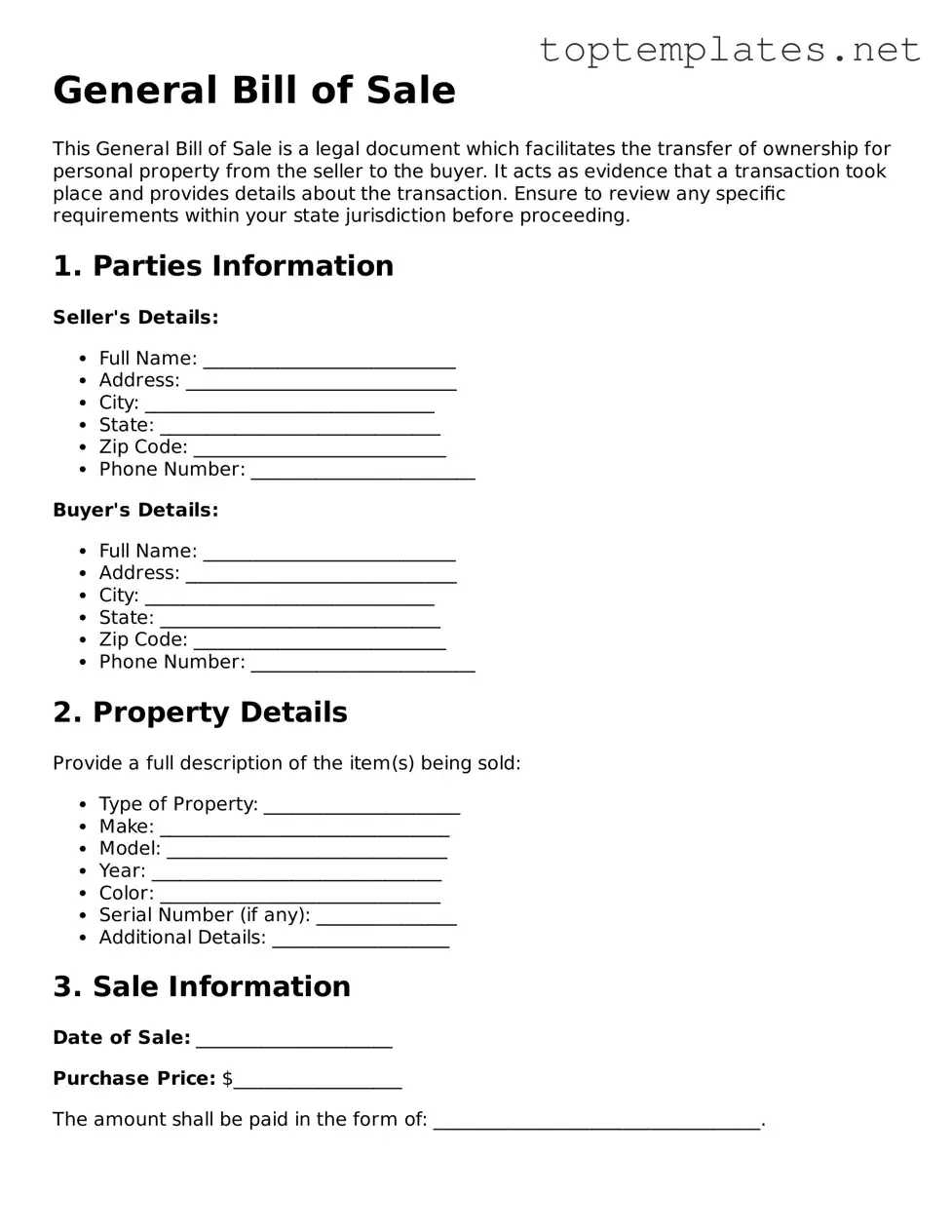General Bill of Sale
This General Bill of Sale is a legal document which facilitates the transfer of ownership for personal property from the seller to the buyer. It acts as evidence that a transaction took place and provides details about the transaction. Ensure to review any specific requirements within your state jurisdiction before proceeding.
1. Parties Information
Seller's Details:
- Full Name: ___________________________
- Address: _____________________________
- City: _______________________________
- State: ______________________________
- Zip Code: ___________________________
- Phone Number: ________________________
Buyer's Details:
- Full Name: ___________________________
- Address: _____________________________
- City: _______________________________
- State: ______________________________
- Zip Code: ___________________________
- Phone Number: ________________________
2. Property Details
Provide a full description of the item(s) being sold:
- Type of Property: _____________________
- Make: _______________________________
- Model: ______________________________
- Year: _______________________________
- Color: ______________________________
- Serial Number (if any): _______________
- Additional Details: ___________________
3. Sale Information
Date of Sale: _____________________
Purchase Price: $__________________
The amount shall be paid in the form of: ___________________________________.
All sales are final and sold in "as is" condition, with no guarantee or warranty expressed or implied.
4. Signatures
This document is legally binding and indicates that the buyer and seller agree to the terms and conditions laid out within. It is important to sign this bill of sale to complete the transaction fully.
Seller's Signature: _______________________________ Date: ____________
Buyer's Signature: ________________________________ Date: ____________
5. Disclosure
This General Bill of Sale does not in itself prove ownership but indicates a transaction took place. It is the responsibility of the buyer to ensure that the transfer of ownership is recorded and acknowledged by the relevant authorities.
Please consult legal counsel for any specific questions or clarification related to the General Bill of Sale or its implementation within your state.
